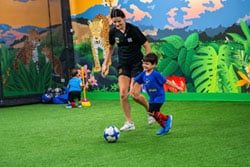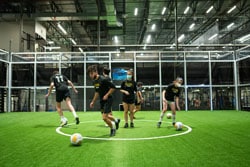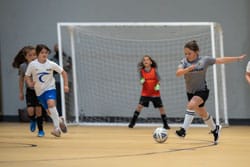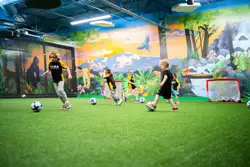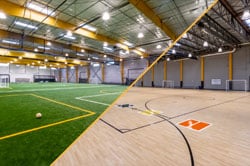4 Common Myths for Young Athletes Starting to Train
You’ve heard a few myths out there about kids lifting weights. We want what’s best for our young athletes, but how do we separate fact from fiction? Here are 4 common myths for children starting to train and the truths you should know.

We all want what’s best for our young athletes. Parents and coaches alike want to see them grow and develop with the best opportunity to find success. Training techniques and technology are constantly improving to better help young athletes on and off the field. Yet, no matter how much information is at our fingertips, myths and misconceptions still perpetuate –specifically around training. We’re here to clear things up.
Here are 4 common myths for young athletes starting to train and the truths you should know.
When done under the proper supervision of a trained professional, training young athletes has remarkable positive benefits throughout their lifetime. The right training will help build supportive muscles, strong bones, and improved motor skills to better perform on the field and in life.
Here are 4 common myths for young athletes starting to train and the truths you should know.
1. Resistance training stunts their growth
False. There is no supporting science to this statement. On the contrary, resistance training helps improve bone density. Whether it’s using their own bodyweight or an additional external load, weight training stimulates bone mineral density, and can build stronger bones during growth spurts.
2. They are too young to start lifting
False. Age isn’t as much of a factor, it’s more about their physical maturation. Not all children are ready to start with an external load; they may need to start with utilizing their body weight first. We want them to have the motor control and coordination through a full range of motion before adding any additional weight. The focus on training at a young age is to perfect proper motion under a trained professional’s supervision. Improvement in a child’s strength helps recruit more motor units, which are the nervous system’s control over specific muscle fibers. The more units, the more control and coordination.
3. Lifting weights will make them bulky
False. Gaining mass for anyone is a detailed effort. It takes a serious diet with an emphasis in caloric surplus, a consistent and proper training regiment, and the supervision of a trained professional with the goal of getting bigger. Lifting heavy weights does not mean your child will get big. Lifting low volume at heavier weights maintains strength but doesn’t necessarily increase size. Size comes from volume –more reps with moderate weight. Young athletes need a strong foundation of muscle to help them be more resilient as they grow older.
4. They can lose weight in certain areas by training those areas
False. There is no way to target weight loss in any area of the body. Doing crunches will build muscle in the abdomen but will not only lose weight there. Weight distribution is determined genetically. The key to losing weight is being active and having a caloric deficit diet –eating about 200 calories less than what’s being burned on average. Almost anyone can lose weight with the proper attention and determination. By logging everything being used in each meal, we can see just how much we are taking in and where to cut down to keep those calories below the amount used throughout the day.
When done under the proper supervision of a trained professional, training young athletes has remarkable positive benefits throughout their lifetime. The right training will help build supportive muscles, strong bones, and improved motor skills to better perform on the field and in life.
Share this post
Tagged Blog


